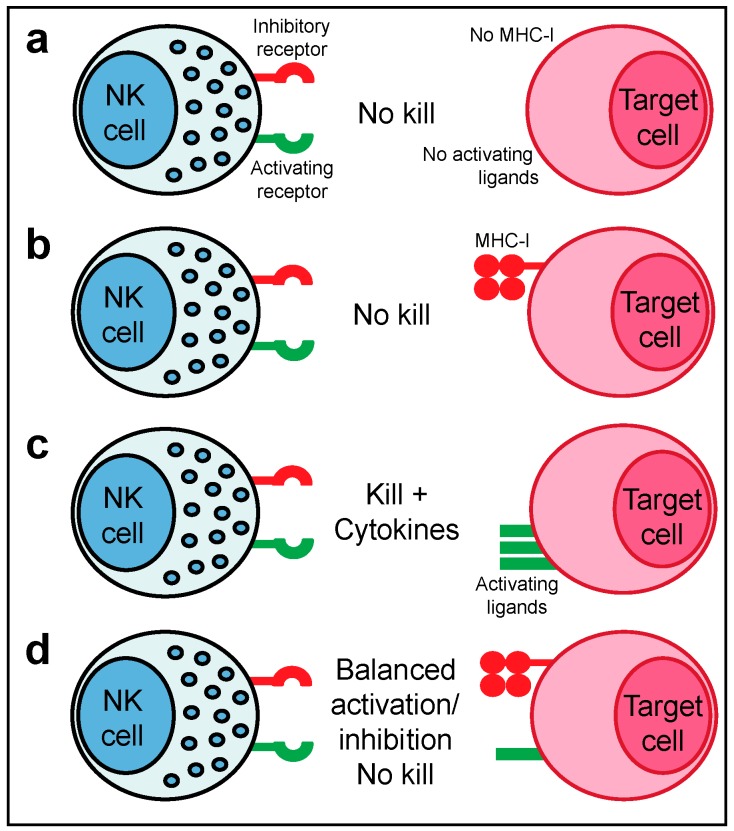Figure 1.
Molecular basis for ‘missing-self’ and ‘induced-self’ recognition by NK cells: (a) NK cells do not respond if either the ligands for activating receptors or ligands for inhibitory receptors e.g., MHC-I are not expressed on target cells; (b) If MHC-I ligands engage inhibitory receptors, such as KIR or NKG2A, on target cells in the absence of ligands for activating receptors then no cytotoxicity is observed; (c) Downregulation of MHC-I and expression of ligands for activating receptors results in robust NK cell cytotoxicity and secretion of cytokines, such as IFN-γ and TNF-α; (d) NK cell responses are regulated by a balance of activating and inhibitory signalling, such that sufficient expression of MHC-I can prevent target cell cytotoxicity even if there is low level expression of activating receptor ligands. In humans, classical MHC-I comprises Human Leukocyte Antigen (HLA)-A, -B and -C molecules and non-classical MHC-I comprises HLA-E, -F, and -G.

